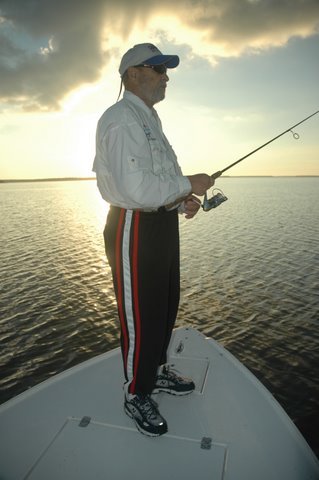By Captain Mel Berman, 970-WFLA
** Ever wonder who the first brave soul was to eat a raw oyster, drink cow’s milk or chow down on snails back in the early days of man? Had to be someone very hungry and with lots of what we call “chutzpa.” That same conjecture goes through our minds as we ponder who the ancient was that first decided to try fooling fish with lure.
Back in the Dark Ages, the rivers, lakes and seas had to be overflowing with all sorts of baitfish – some that have undoubtedly become extinct. Yet, there was that Neanderthal with the audacity to attempt catching fish with a small piece of twig or something he crafted into an imitation bait.We’ll never know who the father of the original artificial lure was back at the dawn of man, but several modern day anglers and lure manufacturers owe him (or possibly her) a great depth of gratitude. The tackle industry today generates billions of dollars annually in sales. And countless fishers worldwide enthusiastically deploy their products.
But why artificials? That’s a question to this day that goes unsatisfactorily answered for a large segment of the fishing public. This is especially true with those who choose to pursue their favorite fish species with baits that Mother Nature was kind enough to provide.
Yet, those in the other camp would never ever consider buying a bait bucket crammed with live shrimp, harvesting a pail full of worms or fiddler crabs or chumming up a school of baitfish and repeatedly throwing a castnet. Instead, they elect to use plastic, wooden and metal replicas of the live stuff and see if they’re good enough to fool fish with them.
In this argument, we shall remain neutral. Certainly there are advantages and disadvantages to each discipline. However, today we will look into the use of the several types of available artificials and the reasons why folks enjoy using them.
For one thing, those artificianados will tell you that they enjoy a much more interesting fishing trip. Deploying lures one has the ability to cover a vast area, as opposed to casting a shrimp in but one spot, then hoping and praying that a fish will come by and eat it.
As a dedicated lure thrower once said, “I like the idea of always doing something, instead of sitting there drowning a live bait.” However, at the core of the lure angler’s devotion is the sense of accomplishment that they are “putting one over on the fish” – making those finny critters perceive, through various techniques, that something good to eat or even annoying is passing by.
Then there is the joy and challenge of – experimenting with a variety of lures, working each at varying retrieves, twitches and slurps — seeing what kind of response that new plug or jig will evoke. On the other hand, we know deep down that the most consistent lure fishers are those who doggedly stay with one specific lure. It could be a plug, jig or spoon they know catches fish, and will work it until it produces strikes. Invariably these determined individuals wind up with at least as many hook-ups as any itchy lure-changer.
- Jay Mastry - March 26, 2024
- Captains Corner, Gorta - March 23, 2024
- Dave Zalewski - March 12, 2024











